Mexican Pinto Beans (Frijoles de la Olla)
Simple yet rich with tradition, Frijoles de la Olla—literally “beans from the pot”—are a cornerstone of Mexican home cooking. This humble dish highlights the natural creaminess of pinto beans, slowly simmered with aromatic herbs, chiles, onions, and garlic to build flavor without the need for excess.
What makes this version shine is the layering of fresh aromatics like cilantro and green onions, alongside a subtle kick from jalapeño and the earthiness of bay leaves.
Whether served as a side, the base of a main, or eaten simply with tortillas, these beans are a true celebration of slow, nourishing comfort. It’s a recipe rooted in patience, culture, and warmth—exactly the way it was meant to be.
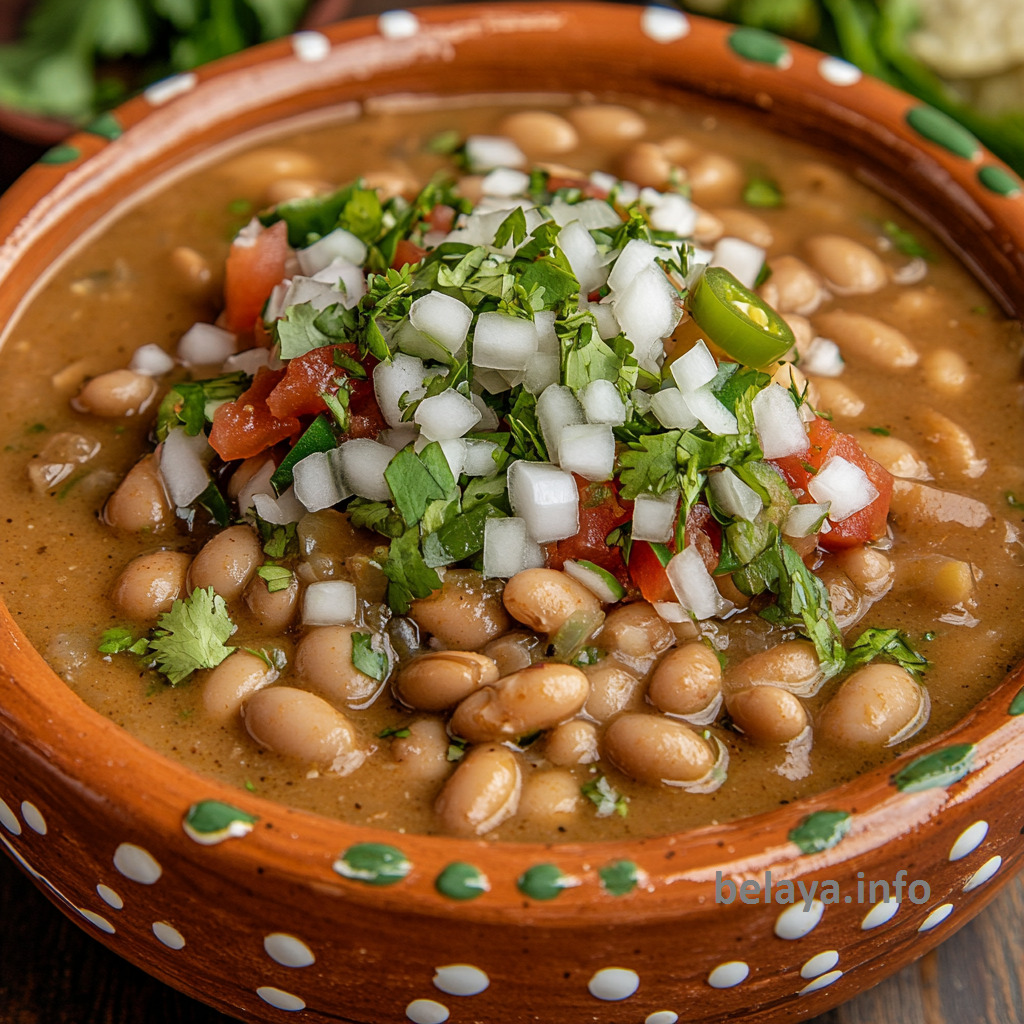
Why People Will Love This Mexican Pinto Beans (Frijoles de la Olla) recipe:
Authentic, Soulful Flavor:
Slow-simmered with aromatics like garlic, onion, jalapeño, and cilantro, this dish delivers layers of warm, earthy flavor that reflect the heart of traditional Mexican cuisine.
Comforting and Nourishing:
Pinto beans are naturally creamy and satisfying, offering a comforting texture and taste that feels like home in every bite.
Versatile Dish with Endless Uses:
These beans can be served on their own, spooned over rice, folded into tacos, or mashed into refried beans—making them perfect for meal prep or feeding a crowd.
Naturally Plant-Based and Wholesome:
Made with real, simple ingredients and either vegetable or chicken broth, this recipe is clean, hearty, and adaptable for both vegetarian and omnivorous diets.
Customizable to Taste and Heat Level:
You control the spice and salt—mild or spicy, rustic or refined—making this dish highly approachable for different preferences and occasions.
Rooted in Tradition:
This is more than just a side dish—Frijoles de la Olla is a culinary tradition passed down through generations, celebrating the power of simplicity and time-honored cooking.
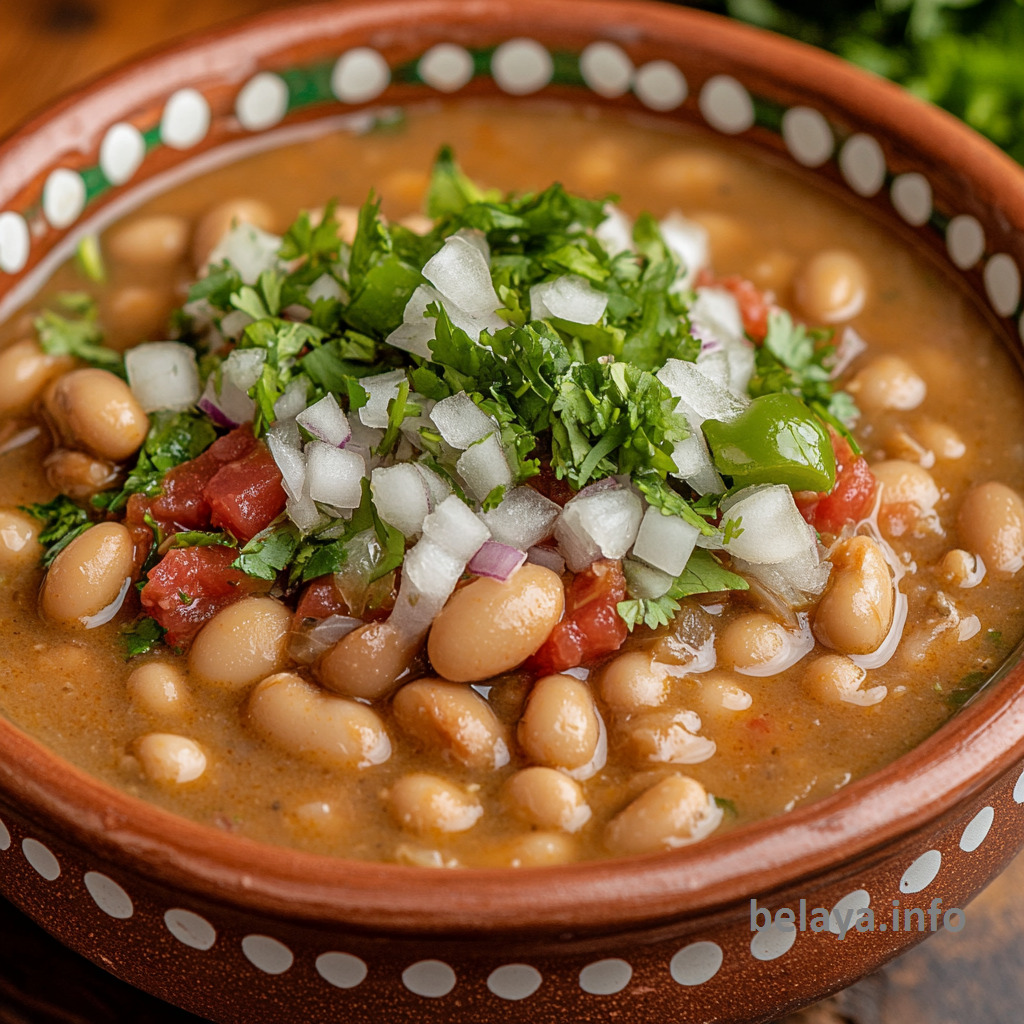
Key Ingredients:
Dried Pinto Beans:
The heart of the dish—these humble legumes become tender, creamy, and full of character when simmered slowly, absorbing every note of flavor from the broth and aromatics.
Yellow and Green Onions:
A foundation of sweetness and gentle sharpness—yellow onion offers depth, while green onions bring freshness and a subtle bite that brighten the pot.
Garlic and Fresh Cilantro:
Garlic infuses warmth and savoriness, while cilantro adds a vibrant herbal lift, giving the beans a complexity that balances rustic and fresh tones.
Jalapeño Pepper and Green Chiles:
These mild chiles add just the right level of warmth and smokiness—never overpowering, but enough to spark the senses and round out the savory profile.
Bay Leaves:
An essential in long-simmered dishes, bay leaves bring a subtle, woodsy aroma that anchors the other flavors and gives the beans a deep, simmered-from-scratch essence.
Broth (Vegetable or Chicken):
Unlike water alone, broth infuses the beans with richness from the very beginning, turning a simple pot of legumes into a comforting, flavorful meal.
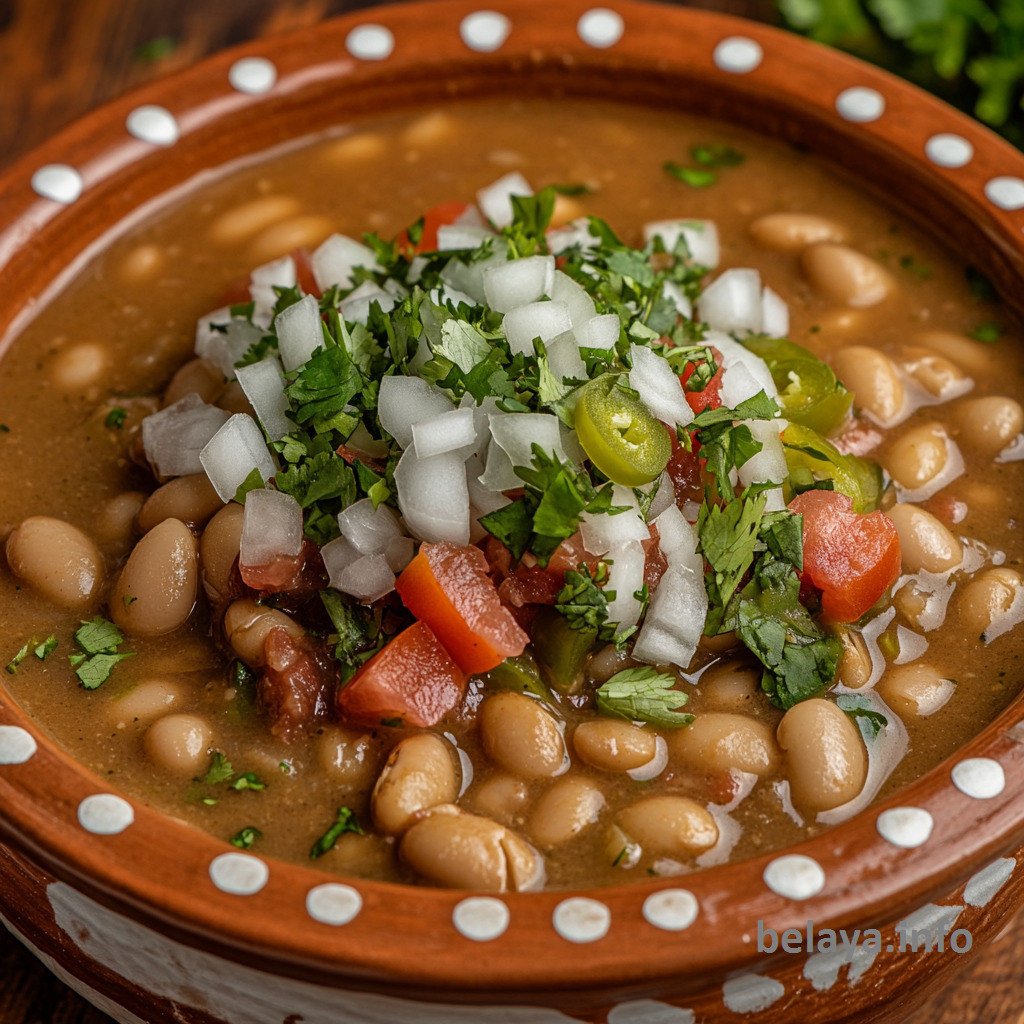
Expert Tips:
Soak Your Beans for Better Texture and Digestibility:
Soaking beans overnight helps them cook more evenly and shortens the cooking time. It also makes them easier to digest by breaking down complex sugars that cause bloating.
Don’t Skip the Soaking Water – Use It Wisely:
The reserved soaking liquid adds starchy body and subtle earthiness to the beans. Use it sparingly during cooking to control consistency and flavor—too much can muddy the taste.
Use a Heavy-Bottomed Pot or Dutch Oven:
Beans simmer best in thick, heavy cookware that distributes heat evenly and maintains a gentle, consistent simmer. Thin pots can lead to scorching at the bottom.
Add Salt Toward the End of Cooking:
Salting beans too early can toughen their skins and slow the cooking process. Instead, season in the final 20–30 minutes when beans are mostly tender.
Build Layers of Flavor Early:
Sautéing onion, garlic, and jalapeño in olive oil before adding the beans deepens the flavor. This simple step adds richness that water or broth alone can’t replicate.
Simmer Low and Slow – Don’t Rush:
Beans thrive on time. Keep the heat low and let the flavors meld gradually. Rapid boiling breaks beans down unevenly and can cause them to split or turn grainy.
Adjust Liquids as You Go:
Keep extra broth or water nearby and add in small increments during cooking. This lets you control the consistency—from brothy to thick—depending on how you want to serve them.
Use Fresh Herbs at the End for Brightness:
Add fresh cilantro just before serving to preserve its vibrant color and flavor. Cooking it too long will dull its impact.
Let Them Rest Before Serving:
Like stews, these beans taste even better after resting. If time allows, let them sit off heat for 15–30 minutes before serving so the starches can thicken and flavors deepen.

Mexican Pinto Beans (Frijoles de la Olla)
Ingredients
1 pound dried pinto beans
2 tablespoons extra virgin olive oil
1/2 yellow onion, chopped fine
2-3 green onions, white and light green parts chopped fine
3 garlic cloves, minced
1/3 cup chopped fresh cilantro, chopped
1 (4.24 ounce) can chopped green chiles (I use Ortega)
1 fresh jalapeño pepper, stem and seeds discarded – mince half of pepper
4 cups vegetable broth or chicken broth
2 cups reserved water from soaking (add 1/2 cup at a time as needed while cooking)
2 bay leaves
Instructions
Soak the beans overnight in water that . Reserve 2 cups of the water the next day and discard the rest.
Add the oil to a Dutch oven and saute onion for about 3 – 5 minutes or until soft.
Add the green onion, garlic, minced jalapeno and cilantro and cook another minute or two.
Add the soaked beans, 2 cups reserved soaking water, green chilies, the other half of jalapeno, chicken broth and bay leaves.
Bring to a boil then reduce heat to low and simmer.
Cook for an hour covered then cook another hour uncovered. Make sure to add more broth or water if needed.
Cook a little longer for softer beans.
Season to taste with salt and freshly ground black pepper
Remove bay leaves and jalapeno half and serve.
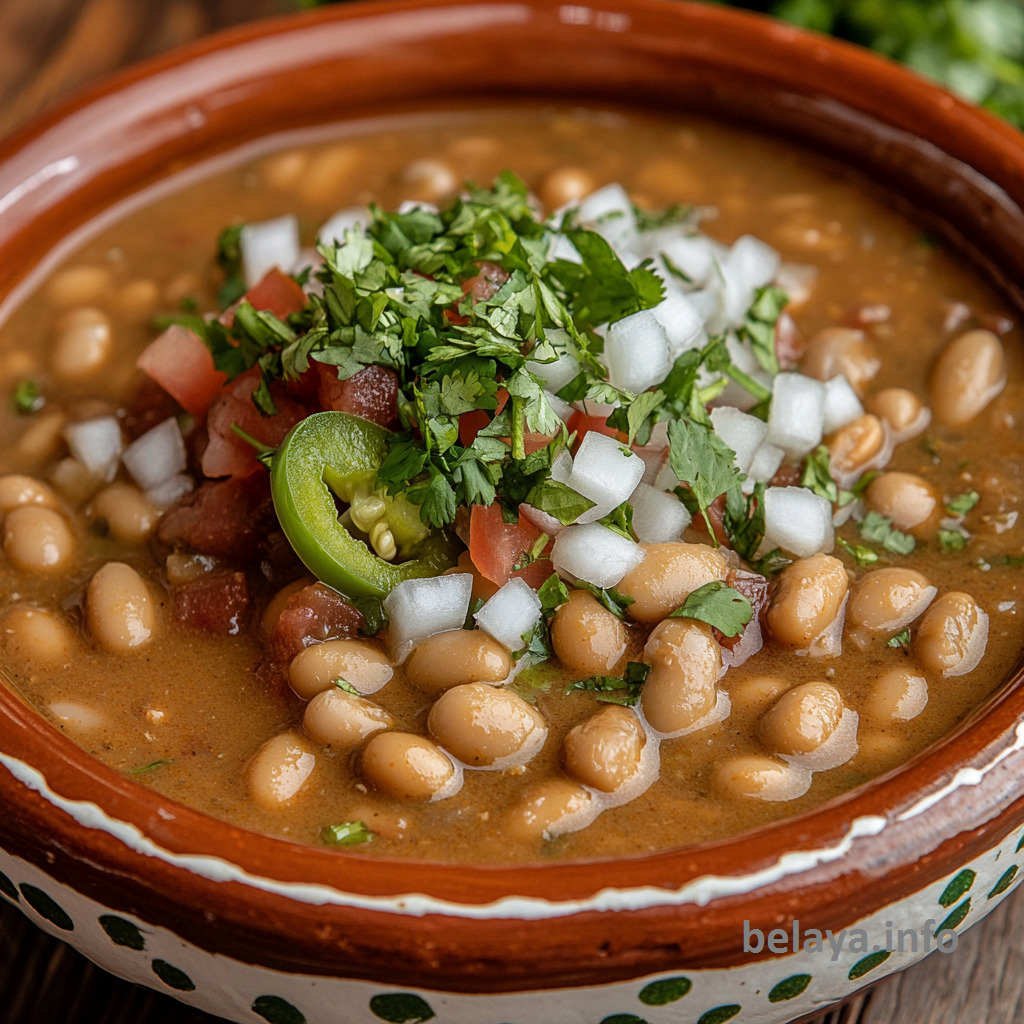
Important Notes When Making Frijoles de la Olla
Quality of Beans Matters:
Always check the age of your dried pinto beans. Old beans (especially those over a year) may never fully soften, no matter how long you cook them. For best results, use beans from a reliable source with a recent harvest.
Flavor Starts with the Sofrito Base:
Sautéing onions, garlic, jalapeño, and cilantro in olive oil before adding the beans builds the aromatic backbone of the entire dish. This step is essential—don’t rush or skip it.
Low and Gentle Simmering Prevents Splitting:
Boiling too hard can cause the beans to break apart and lose their creamy interior. Keep the heat low, and cook uncovered only after the beans have mostly softened to concentrate flavors.
Broth Is More Than Liquid—It’s a Flavor Carrier:
Using broth instead of water infuses the beans with richness from the beginning. Choose low-sodium vegetable or chicken broth so you can better control the seasoning throughout the cooking process.
Salt and Acidity Timing Are Crucial:
Add salt and acidic ingredients (like vinegar or tomatoes, if using) only once the beans are tender. Adding them too early can toughen bean skins and extend cooking time significantly.
Customize the Heat with Jalapeño Placement:
This recipe uses minced jalapeño for subtle heat and a whole half for deeper infusion. If you want more spice, leave the seeds in or use the whole pepper. For less, omit entirely or remove early during cooking.
Let the Beans Rest in Their Liquid:
After cooking, allowing the beans to sit in their broth enhances the creaminess and melds the flavors. They’ll thicken naturally as they rest, making them even better for leftovers.
Remove Bay Leaves and Whole Jalapeño Before Serving:
These are for flavor, not texture—leaving them in can result in an unpleasant bite. Always remove them just before plating.
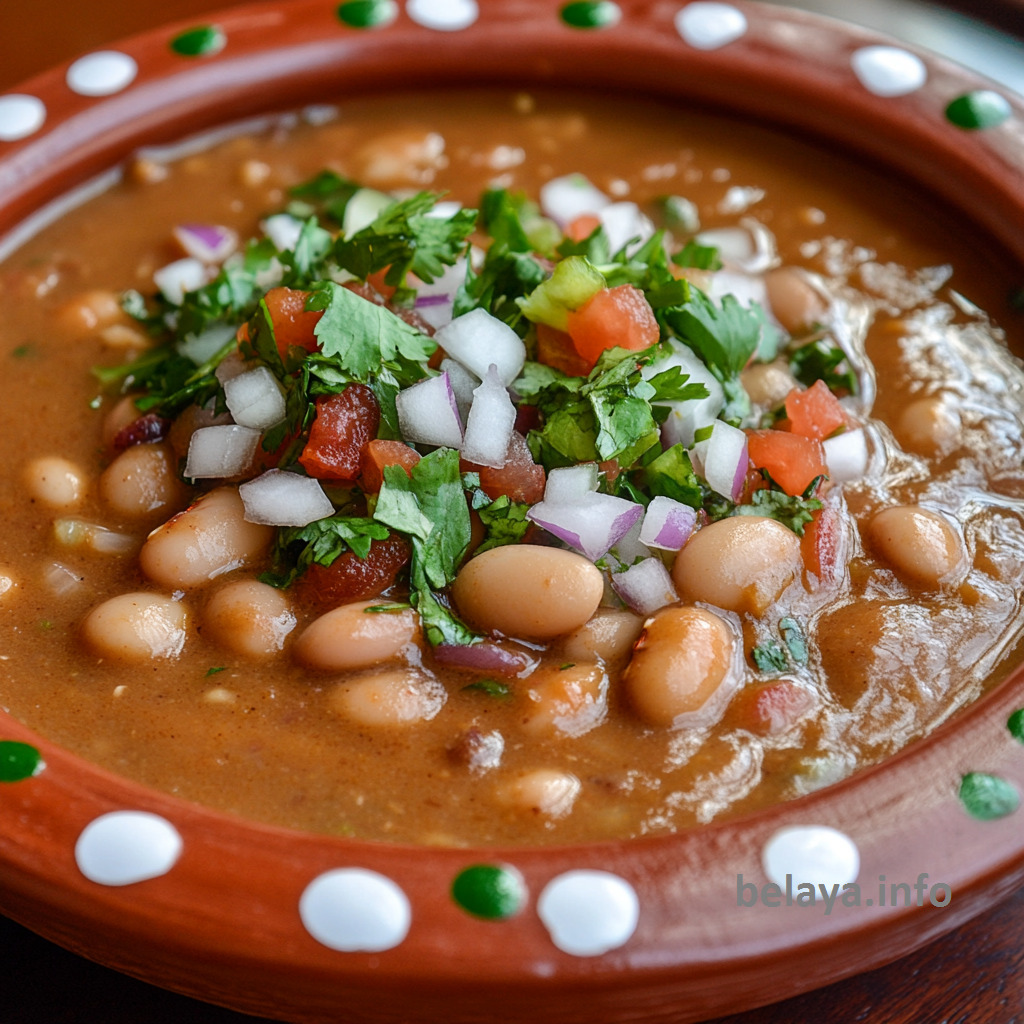
How to Enjoy Frijoles de la Olla After Cooking
Serve as a Classic Side Dish:
Spoon them into a bowl with some of their rich broth and enjoy alongside grilled meats, tacos, enchiladas, or tamales for a truly authentic Mexican meal.
Make Hearty Burrito or Taco Fillings:
Mash or partially mash the beans and spoon into warm tortillas with rice, cheese, and salsa for quick burritos or vegetarian tacos.
Turn Into Refried Beans (Frijoles Refritos):
Sauté onion and garlic in lard or oil, add the cooked beans (drained), and mash them while cooking for homemade refried beans—creamy, savory, and perfect with anything.
Serve with Rice for a Complete Protein:
Pair with warm white or Mexican-style rice to create a protein-rich, fiber-packed vegetarian main dish.
Enjoy as a Soup or Stew:
Add extra broth and simmer with more vegetables or shredded meat to transform leftovers into a rustic bean soup or stew.
Top with Fresh Garnishes:
Finish with chopped cilantro, diced onion, a squeeze of lime, queso fresco, or avocado slices for a vibrant, fresh touch.
Use as a Base for Huevos Rancheros or Breakfast Bowls:
Layer beans under fried or poached eggs, salsa, and tortillas for a hearty and satisfying breakfast or brunch dish.
Nutrition Information:
For one serving of Mexican Pinto Beans (Frijoles de la Olla), based on a recipe yield of 8 servings from 1 pound of dried beans and the listed ingredients:
Calories: 185 kcal | Total Fat: 5.6 g
Saturated Fat: 0.8 g | Monounsaturated Fat: 3.6 g | Polyunsaturated Fat: 0.9 g
Cholesterol: 0 mg | Sodium: 290–360 mg (depending on broth and added salt)
Total Carbohydrates: 26.7 g | Dietary Fiber: 8.5 g | Sugars: 2.1 g
Protein: 9.8 g
Nutrition Notes:
Calculations are based on using vegetable broth, not chicken broth.
Sodium varies depending on your broth brand and how much salt is added at the end.
Pinto beans are naturally high in fiber, plant-based protein, and iron, making this dish highly nutritious and filling on its own.
Frequently Asked Questions:
Do I really need to soak the beans overnight?
Yes, soaking is highly recommended. It softens the beans, reduces cooking time, and improves digestibility by breaking down complex sugars. If you’re short on time, a quick soak method (boil for 2 minutes, then let sit for 1 hour) can be used in a pinch.
Can I use canned beans instead of dried beans?
Technically yes, but it’s not ideal for this recipe. Canned beans are already cooked and won’t absorb the depth of flavor developed through slow simmering. If using canned, reduce simmer time and adjust seasoning accordingly—but you’ll miss the creamy texture and complexity of traditional frijoles de la olla.
What’s the best way to control the spice level?
The jalapeño is key. Use only half (or remove it early) for mild heat. Keep the seeds in or use a whole pepper for a spicier profile. You can also omit it entirely or substitute with a milder chile, like Anaheim.
Can I make this recipe in a slow cooker or Instant Pot?
Yes! For a slow cooker, cook on low for 6–8 hours after sautéing the aromatics. For an Instant Pot, cook on high pressure for 35–40 minutes (no soaking needed), then natural release for 15–20 minutes. Always taste and adjust seasoning afterward.
How long do the beans last and how should I store them?
Store cooled beans in an airtight container in the fridge for up to 5 days. They actually taste better the next day as flavors deepen. You can also freeze them for up to 3 months—just thaw overnight in the fridge and reheat gently on the stove.
How do I know when the beans are fully cooked?
Fully cooked pinto beans should be tender but not falling apart. When pressed between your fingers or against the side of the pot, they should mash easily. If they’re still firm or grainy, keep simmering and check every 10–15 minutes.
What if my beans are taking too long to soften?
It could be due to old beans or hard water. Older beans may never fully soften no matter how long you cook them. Try adding a pinch of baking soda (1/4 tsp) to the cooking liquid to help soften stubborn beans, but use it sparingly to avoid altering flavor.
Should I keep the pot covered the entire time?
Start covered to retain moisture and heat, then finish uncovered in the second half of cooking to allow the liquid to reduce and concentrate flavors. This also helps thicken the broth naturally without mashing the beans.
Can I add salt at the beginning of cooking?
It’s best to wait. Adding salt early can toughen bean skins and slow cooking. For the best texture, salt toward the end—when beans are tender but not yet fully cooked—so they absorb flavor without compromising softness.
How do I avoid mushy beans?
Maintain a gentle simmer and stir minimally. Boiling too hard or stirring frequently can break the beans down too quickly. If you prefer beans that hold their shape, be gentle and patient with the heat—and always cook low and slow.